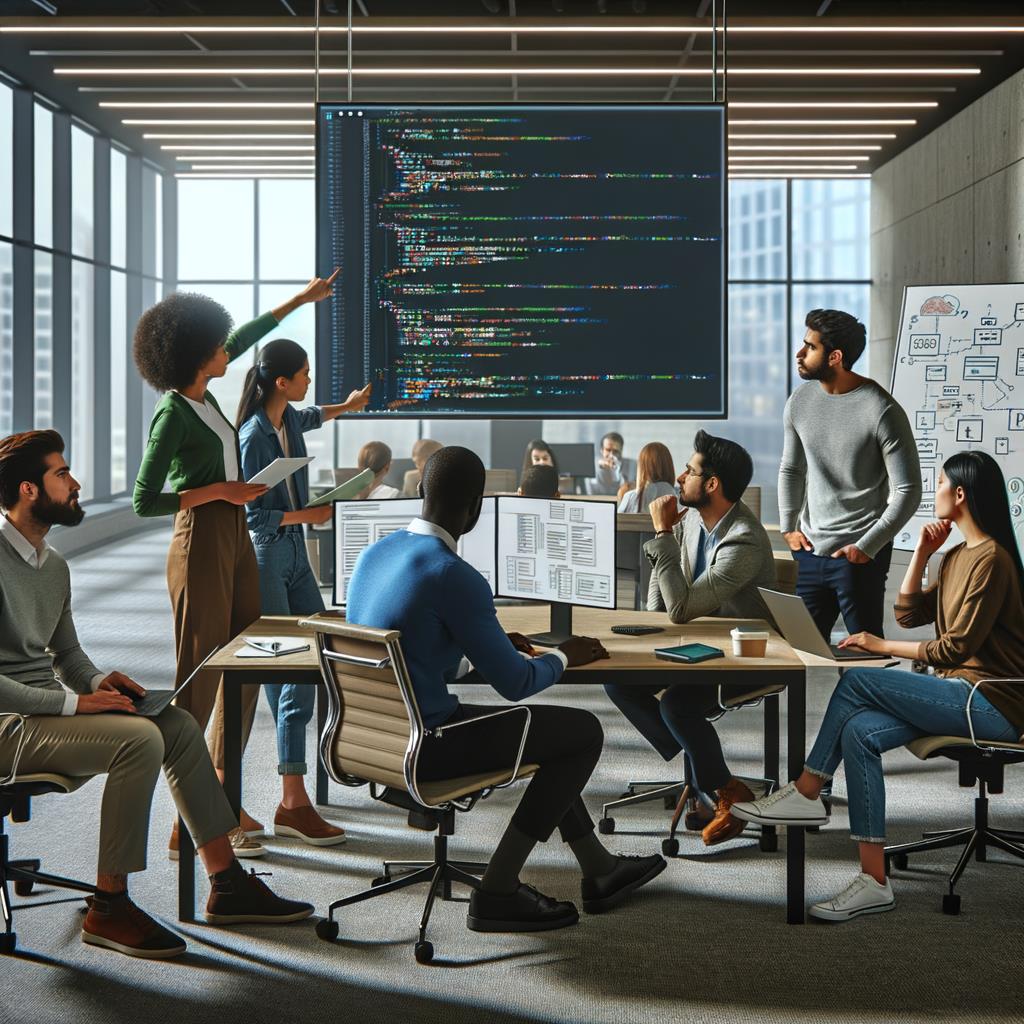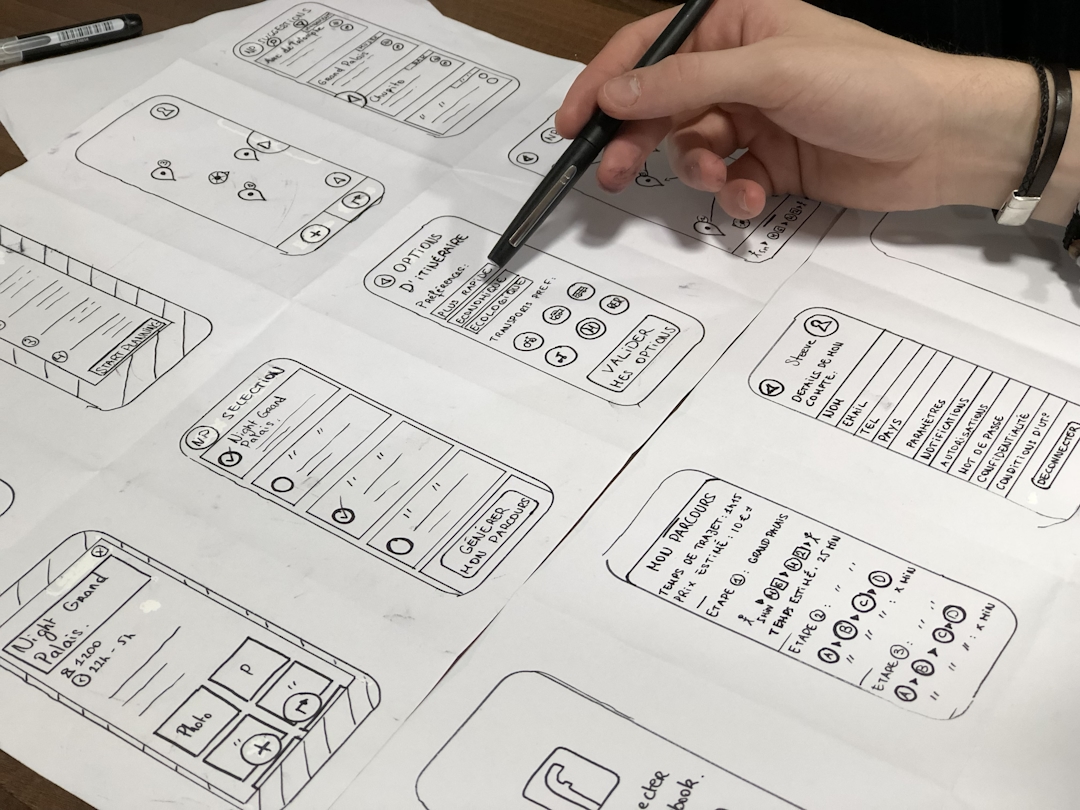Understanding the Distinction Between Web Design and Development
In the digital realm, creating a website involves two distinct yet interconnected roles: web design and web development. These roles, while complementary, serve different purposes in the website creation process.
Web design focuses on the visual elements, crafting the look and feel of a site to ensure an engaging user experience. It involves the aesthetic aspects such as layout, color schemes, and typography, aiming to create an appealing interface that resonates with users.
On the other hand, web development brings these designs to life, constructing the functional and technical backbone that allows a website to operate smoothly. This involves coding, creating databases, and ensuring that all features work seamlessly across different devices and browsers.
Understanding these differences is essential for businesses aiming to create effective and user-friendly websites. But what exactly sets web design and development apart? Let's explore their unique contributions to the digital landscape.
Web Designers: Roles and Responsibilities #

Web Designers: Roles and Responsibilities
Web designers are the artists behind the digital canvas, crafting the visual elements that define a website's look and feel. They ensure that a site is not only visually appealing but also offers a seamless user experience. Imagine walking into a beautifully designed store where everything is easy to find; that's what web designers aim to create online. They use tools like Figma, Sketch, and Adobe Photoshop to build wireframes and mockups, serving as blueprints for the website's design.
A key responsibility of web designers is ensuring the site is responsive, meaning it looks good on all devices—be it a phone, tablet, or desktop. This is crucial because a site that doesn't adapt can frustrate users and drive them away. Designers also collaborate with developers to align their creative vision with the technical aspects of the project. Understanding these responsibilities helps businesses appreciate the value of design in creating an effective and engaging website. How might your business benefit from a user-friendly web design?
Web Developers: Roles and Responsibilities #

Web Developers: Roles and Responsibilities
Web developers are the builders who transform design blueprints into interactive and functional websites. They work behind the scenes, using coding languages like HTML, CSS, and JavaScript to construct the website's structure and features. Think of them as engineers ensuring the website's foundation is solid and all parts function as intended. Their role is crucial because even the most beautiful design is ineffective if the site doesn't work properly.
Developers are typically divided into two main categories: front-end and back-end. Front-end developers focus on what users see and interact with, ensuring everything looks and works as designed. Back-end developers manage the server side, handling databases and server logic to support the site's functionality. They often collaborate with designers to bring visual elements to life and ensure the site runs smoothly.
For businesses, having skilled developers means faster, more reliable websites that can enhance user satisfaction and drive engagement. Could enhancing your website's functionality improve your customer experience?
Key Differences and Collaboration #

Key Differences and Collaboration
Web design and development may appear similar, but they focus on different aspects of website creation. Designers concentrate on aesthetics and user experience, crafting the visual elements that engage users. In contrast, developers focus on functionality, building the technical framework that ensures the site operates efficiently. These distinct roles require different skill sets: designers excel with design software, while developers excel in programming languages.
Despite these differences, successful website creation hinges on collaboration between designers and developers. This partnership is like a dance, where each party needs to be in sync to avoid stepping on each other's toes. Clear communication and shared goals allow them to align their efforts, ensuring the final product is both visually appealing and technically sound. For businesses, fostering this collaboration can lead to more innovative and effective websites. What strategies could your team use to enhance collaboration between web design and development?
Conclusion
In today's digital landscape, understanding the distinct roles of web designers and developers is crucial for creating effective websites. Designers focus on crafting visually appealing and user-friendly interfaces, while developers ensure these designs function seamlessly by building the site's technical framework. Despite their differences, collaboration between these two roles is key to successful website creation. By aligning their efforts, businesses can produce websites that are both engaging and efficient. Embracing this synergy not only enhances user experience but also drives business growth in an increasingly digital world. How might a deeper understanding of these roles improve your next web project?
References
- Web Developer vs. Web Designer: How Does Their Role Differ? - DistantJob Blog - https://distantjob.com/blog/web-developer-vs-web-designer/
- Web Design vs. Web Development: Differences & Why It Matters - HubSpot Blog - https://blog.hubspot.com/website/web-design-vs-web-development
- Web Design vs. Web Development: What's the Difference? - Maryville University Blog - https://online.maryville.edu/blog/web-design-vs-web-development/

